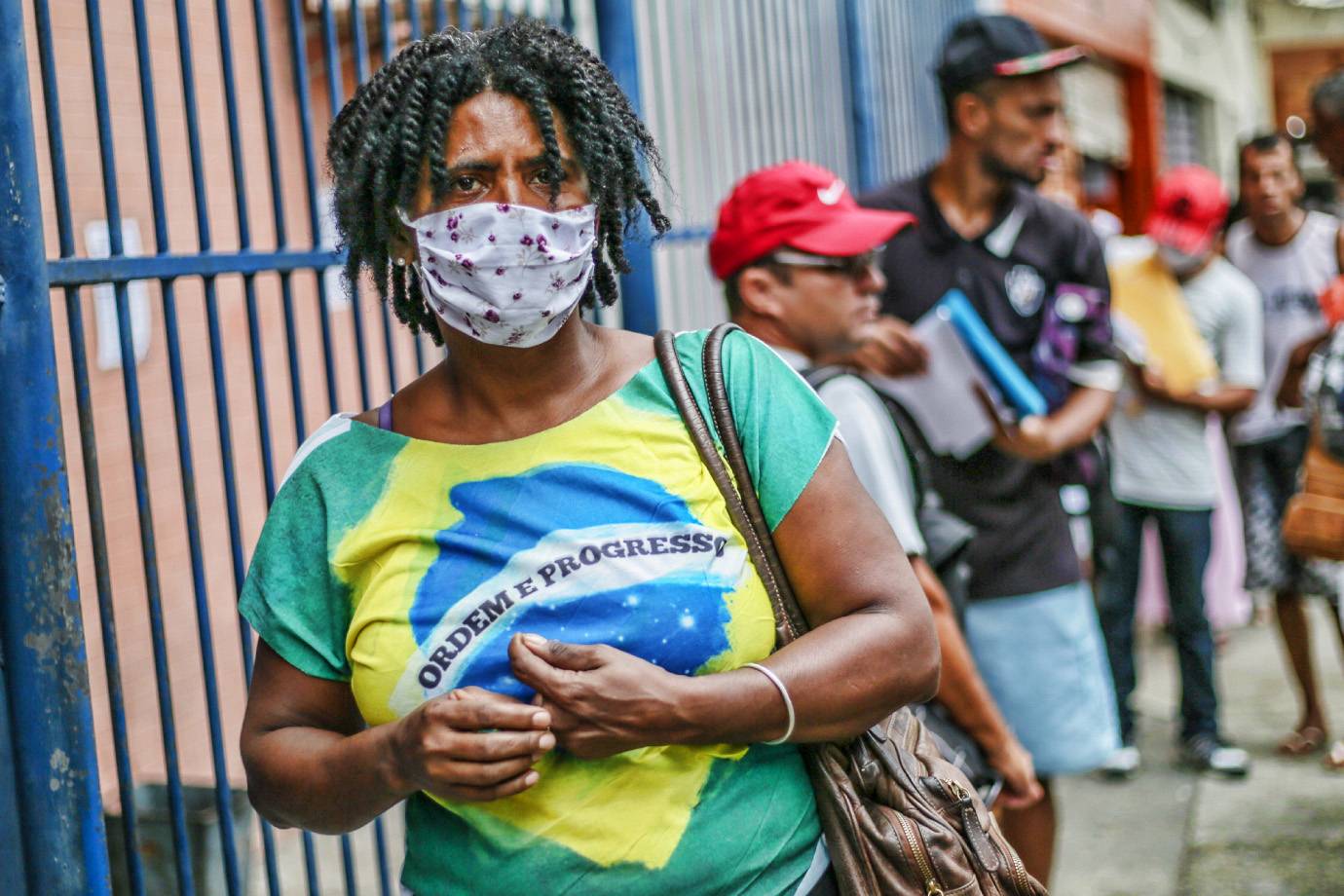RIO DE JANEIRO, BRAZIL – In March, America was watching the spread of the coronavirus in the world with unequal concern. While Europe was already overwhelmed by the pandemic, on the other side of the Atlantic the first measures were taken with no clear perspective. After Milan and Madrid came New York, São Paulo, and Guayaquil.

Today the roles have been reversed, although the uncertainty about the outcome remains the same. The only certainty is that the health emergency is far from over and has not reached its peak. And America is now the epicenter of the virus, while new outbreaks are beginning to occur in Asia and some European countries. The latest data shows that India is a potential time bomb.
The accelerated spread of the disease is not the subject of debate. On Friday, June 19th, the World Health Organization (W.H.O.) confirmed it. The spread of Covid-19 is threatening a deeply unequal region. From Canada to Argentina, according to official data provided by local authorities, there are some 220,000 deaths and over four million infections, almost half of the global total. These figures explain the words of Tedros Adhanom Ghebreyesus, W..HO. Director-General. According to him, the world is approaching a “new dangerous stage” with an unclear horizon.
This stage has seen a daunting collection of photos in recent weeks that transcends the collapse of healthcare and reflects structural shortcomings, particularly in South America. Dead bodies on the doorstep of homes in the province of Guayas, Ecuador; dead on the streets after being rejected by hospitals in Bolivia; displacement of thousands of people without work, a phenomenon that occurred mainly in Peru, in addition to the over 75,000 Venezuelans who have returned to their country due to the lack of protection against the coronavirus; hundreds of cases of corruption; lack of transparency and repeated demonstrations of recklessness, including denialism, by some governments such as that of Jair Bolsonaro.
Each country has its own specificities, but Latin America started to isolate itself very early, in some cases by closing its borders, like Colombia, observing the impact of Covid-19 in Europe. Now, the region is likely to record one of the longest quarantines in the world. Inevitable, though with devastating consequences in economic ecosystems where informality in the labor market often exceeds 50 percent. The panorama was described in late April by Colombian epidemiologist Zulma Cucunubá, of Imperial College London: the situation is one of enormous uncertainty, and everyone has before them paths that have never been traveled.
This reflection is still current. “For everyone, it is clear that the new epicenter is the American continent, predominantly the United States, which has become the country with the highest number of cases (more than two million). But Latin America will probably become another one soon, as we have already observed in five countries”, explained the infectologist Héctor Raúl Pérez Gómez, of the University of Guadalajara, Mexico.
In Brazil, the epidemic is spreading unhindered, with more than one million infections and almost 50,000 deaths. Peru is overwhelmed by the coronavirus: health services are overburdened, and the rural communities and indigenous peoples of the Amazon are unable to cope with the emergency. Although officially the number of cases is around 250,000, in late May Peru was the country with the most deaths, 54 percent more than the average.
Mexico never decreed a strict confinement and has already exceeded 20,000 deaths. Chile, with fewer than 20 million inhabitants, counts over 230,000 cases. And Colombia, which has managed to contain the virus’ devastation with strict prevention measures and has recorded some 2,000 deaths, has now embarked on a path of economic reactivation that could undermine the efforts of recent months. On Friday, the Andean country celebrated “a day without VAT” (consumer tax) that has multiplied the crowds in trade.
However, as Europe tests its new normalcy and other latitudes prepare to face the toughest stage of the pandemic, an estimate of when the coronavirus will peak is impossible. To do so, testing would be required worldwide, and humanity would have to conform to the same behavior and prevention patterns. The case of Latin America is, in a way, a model to illustrate this uncertainty.
“What is particularly worrying? There are several factors,” Pérez Gómez continues. “First, many countries are not conducting enough PCR laboratory tests for timely detection of the disease. Failing to perform enough laboratory tests leads to uncertainty in the numbers and, secondly, difficulties in interrupting the transmission chain. Some countries are in stage 3, where the number of community infections per day is counted in thousands. The prevalence of comorbidities is also a concern. In Mexico, 12 percent of the adult population has diabetes mellitus, 35 percent have high blood pressure and up to 70 percent are overweight and obese”.

The challenges of maintaining social isolation are compounded by several factors: the large number of metropolises; informal settlements lacking health care services; the need to go out to work for millions of people who live on what they earn daily; and the precariousness of public transportation.
Ultimately, it is economic inequality, which under these circumstances risks triggering the perfect storm. That is: exacerbate the turbulence in the region and limit governments’ ability to respond.
“Inequality has many mechanisms through which it can affect economic performance. There is an immediate one: the escalation of social tensions,” says Juan Huitzilihuitl Flores Zendejas, professor at the Paul Bairoch Institute of Economic History at the University of Geneva. “These tensions, typical of countries as unequal as Latin Americans, escalate during economic crises. What does that mean? That there are risks of political instability, because there are more incentives from the sectors most affected by the crisis to resort to non-institutional channels to express their dissatisfaction, as was the case before the crisis.”Although the country’s features are very different, this is also the case in India – which, despite reporting some 13,000 deaths since the start of the pandemic, has recorded an exponential increase in cases over the past week. The Asian giant, with around 1.3 billion inhabitants, declared confinement in late March and extended it until June 30th in the so-called “containment zones,” where the largest number of infected people are concentrated.
The impacts of the reopening are still unknown, but unless the trend is reversed, they will come before the country reaches the peak of the health crisis.
Africa is another great unknown amid the emergency. According to official data, it is still one of the least affected continents by Covid-19, with approximately 300,000 declared cases, representing around three percent of the world total, with 17 percent of the planet’s population and around 7,500 dead (1.6 percent of the global figure). However, all alarms are ringing due to the growing speed of contagion over the past month.
The pandemic came later, both because of Africa’s reduced connectivity with the outside world and because of the swift closing of borders, but the battle will be long and far from being won. In addition, in an attempt to cushion a brutal economic crisis, the borders will be reopened little by little in the coming weeks, even as the pandemic is accelerating, reports José Naranjo.
The reopening of borders and the reactivation pose a similar dilemma in Latin America. “It could be an enormous risk if the region carries on or thinks it can carry on as usual,” says Sergio Guzmán, director of Colombia Risk Analysis. “The model of excessive dependence on raw materials and the lack of added value in the service chain makes us particularly vulnerable to external shocks”.
The paradox is that this also represents an opportunity to change the paradigm and focus efforts on “green growth, education, and technification of labor and manufacturing, now that the world will disconnect from China a little. But these are all scenarios for the future that ultimately hinge on the development of the pandemic. It is accelerating, it will persist and it has not yet reached its peak.
Source: El País

